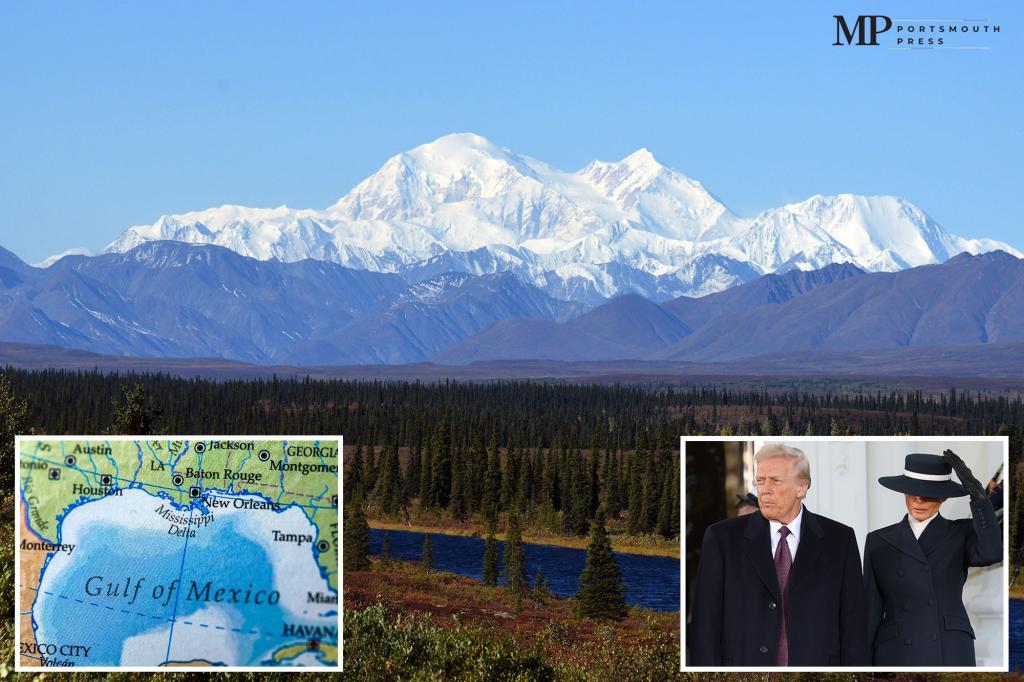In a bold move that could reshape how we refer to significant geographical features, incoming President Donald Trump announced his plans to rename the Gulf of Mexico to the ‘Gulf of America’ as part of a series of executive orders expected to take effect on his first day in office. This decision echoes Trump’s ongoing theme of prioritizing American interests, as articulated in his inaugural address.
What’s in a Name?
During his inaugural speech, Trump described the name change as both ‘beautiful’ and ‘appropriate,’ justifying it by noting that the United States plays a major role in the Gulf’s economic activities. He stated, “The Gulf of Mexico is pivotal for our nation, and it’s essential that we reflect American values in its name.” This new name change is part of a wider narrative where the President seeks to emphasize America’s accomplishments and influence.
The Gulf’s Importance
Stretching across five states—Texas, Louisiana, Mississippi, Alabama, and Florida—the Gulf of Mexico plays a critical role in various industries, including fishing, tourism, and oil production. In fact, this body of water covers about 600,000 square miles and has been a vital resource for Americans. Trump believes that renaming it could reinforce the significance of the Gulf to American commerce.
Past Conflicts and Future Challenges
While the Gulf of Mexico has long held its name, this significant change may lead to challenges on the international stage. The U.S. and Mexico share borders and maritime jurisdiction over this waterway, raising questions about how other nations will respond. Trump has previously expressed tensions with Mexico, which could color reactions to this unilateral name change.
The Role of Geography
Presidents possess the authority to rename geographic features through executive orders, and the U.S. Board on Geographic Names usually oversees such changes. However, this decision will primarily affect federal references, leaving non-federal entities and international reactions up in the air. The lack of a formal international agreement on naming bodies of water could lead to various diplomatic repercussions.
Mount McKinley vs. Denali
Along with renaming the Gulf, Trump also plans to change the name of Mount Denali back to Mount McKinley, reinstating its original designation which honors President William McKinley. The mountain – the tallest in North America – was officially renamed Denali in 2015 by President Obama to recognize the indigenous name used by the Koyukon Athabaskan people. This aspect of Trump’s executive orders highlights his desire to honor American history, even as some, including Alaska Senator Lisa Murkowski, oppose the change.
Local Engagement and Legislative Responses
In response to the Gulf’s renaming, some lawmakers are calling for legislative action to support the President’s vision. Representative Marjorie Taylor Greene, for instance, has expressed her intention to formalize the renaming through legislation. This could showcase a growing trend among certain political figures to push similarly symbolic changes.
| Feature | Current Name | Proposed Name | Significance |
|---|---|---|---|
| Gulf of Mexico | Gulf of Mexico | Gulf of America | To honor American economic contributions |
| Mount Denali | Mount Denali | Mount McKinley | To recognize the historical significance of President McKinley |
As Trump prepares to sign nearly 200 executive orders on his first day, the implications of these name changes are far-reaching. While they may seem like symbolic gestures, they reflect deeper currents in American politics about identity, history, and the relationship with neighboring nations. As the world watches, it will be interesting to see how these name changes resonate across the globe and what impact they will truly have.









